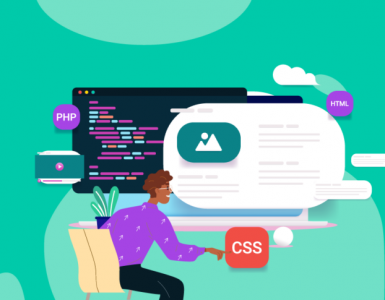Most of the visual creativity in the software industry is concentrated in UI/UX design. Front-end designers have a vast range of design tools to choose from. These tools can achieve everything from creating wireframes, mockups, and prototypes to rendering realistic product images.
But how do you know the best UX UI design tools in 2022?
Modern design tools as compared to their older versions offer cloud storage and real-time team collaboration. Older UX/UI design tools lacked this feature.
Here we list such UI UX design tools that are hand-picked by our experts.
1. Adobe XD
Unsurprisingly, our experts picked Adobe XD as the first design tool for this list. The brand is known for its feature-rich design tools that are industry standards, such as Photoshop and Illustrator.
Adobe XD is a comparatively new addition to the suite of highly robust design tools offered by Adobe, but it’s much lighter (smaller in size and uses fewer CPU resources) than Photoshop or Illustrator. This lightweight architecture makes it suitable for UX/UI designers.
Primarily it is available as a desktop tool. However, it supports Creative Cloud, the signature Adobe cloud-based collaboration infrastructure that allows real-time collaboration between designers. Adobe XD is now available for Windows and Mac OS users, but Linux users can use its web platform.
Adobe XD has a 7-days free trial, and its paid subscription starts at $9.99/month.
2. Figma
Figma is a compelling and user-friendly UX/UI design platform due to its simple-to-use interface. It is a cloud-based tool that comes with all the essential features that you require to design a mobile app or a website. From basic wireframes to user flows and working UI prototypes, all can be created with Figma quickly.
It offers real-time collaboration over design projects so large UX/UI design teams can work on the same project simultaneously without conflicts. This robustness does not imply that Figma is unsuitable for individuals or freelancers. Out of the box, Figma is primarily focused on vector designs and prototyping, but you can quickly expand its scope by installing additional plug-ins.
Figma works on all operating systems, including Mac, Windows, and Linux, and a web version of the app is also available. The software is free to use for creating unlimited personal designs and up to 3 shared Figma and FigJam files.
3. Sketch
Sketch is a feature-rich UX/UI design tool trusted by designers at Google, MIT, and Xbox. The primary objective is to help designers create vector wireframes, designs, and prototypes. Given its lightweight and fast processing, it is surprising that it has all the functionalities that designers need to create wireframes and convert them into fully polished user interfaces. The prototyping features allow you to incorporate motion and transitions to develop comprehensive illustrations.
With this design tool, you can manage your design team, review documentation, and access design resources by logging into Sketch in the browser. However, to edit the design documents, you must use the desktop app, which is only available for Mac OS. Recently, Sketch released a real-time collaboration feature that allows large teams to work on a single project.
Like Figma, the functionality of Sketch can be extended using plug-ins that allow you to do so much more, such as adding stock images, creating portable design files, and incorporating JSON data.
You can try Sketch for free for 30 days, after which you have to subscribe to a paid plan (starting at $9/month).
4. Lucidchart
Lucidchart is a highly efficient UX/UI design tool for creating wireframes. It has various visual elements that can make your illustrations much more intuitive. This design tool can be an excellent addition to your toolkit to create information architecture and workflows or organize the structure of the website or software design.
Unlike other UI/UX design tools on the list, Lucidchart is not available as a desktop or mobile app but only as a web application. You can use its free version for up to 3 editable documents and hundred professional templates. For unlimited editable documents, you can subscribe to one of the paid plans that starts at $7.95/month.
5. Framer
One of the core responsibilities of UX/UI designers is prototyping. Whenever you design an interactive element like drop-downs, checkboxes, or radio buttons, they pose a challenge during testing sessions. This is where Framer stands out as a prototyping tool.
Any interactive element you code in your prototypes with Framer, you can test these elements in a highly realistic testing environment to create a user-friendly experience. You can still design highly interactive prototypes, even if you are not a coder, as this design tool allows collaboration. You can invite your team developers to work with you on a project.
You can create and publish unlimited sites with the Framer app or subscribe to paid plans starting at $15/site for additional functionalities.
Conclusion
The best UX/UI design tool is the one that empowers you to unleash your creativity and effectively convert it into deployable products. We hope these design tools will accommodate all your front-end design needs.
Talent500 is the platform for front-end designers to find career redefining opportunities with fast-growing start-ups and Fortune 500 companies. Sign up here to explore more.






Add comment